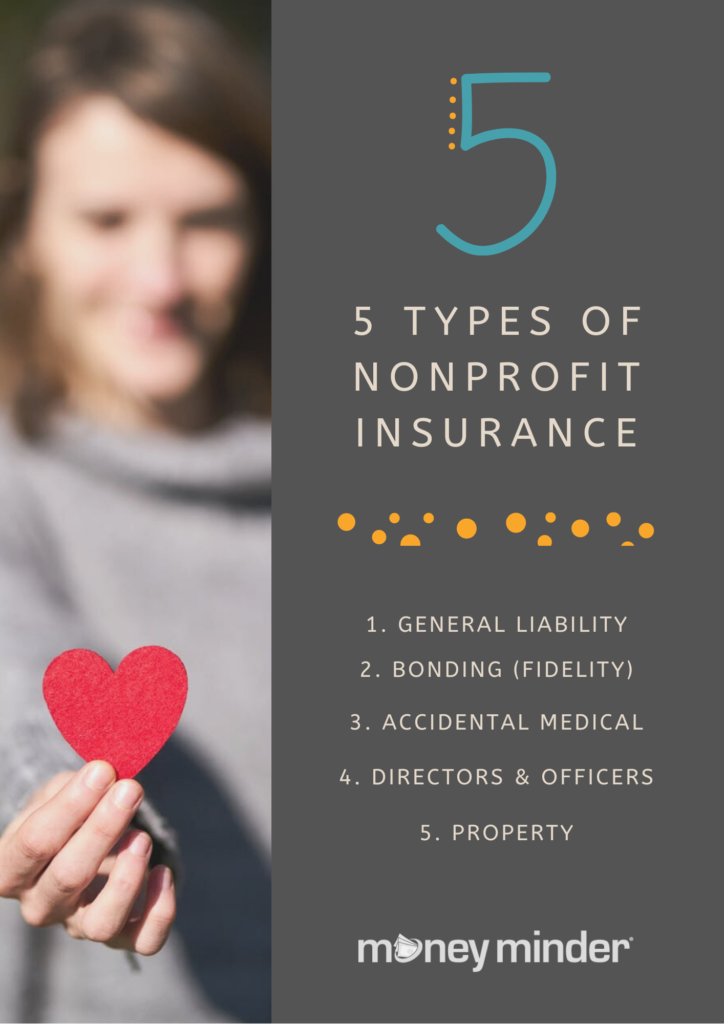We hate to be so strict, but your nonprofit needs insurance. Period.
Why? These days, no one should agree to sit on a nonprofit board that doesn’t have adequate insurance coverage. As an officer your personal assets can be exposed to risk. If your nonprofit is sued and lacks proper insurance, you could lose your savings, your home and other assets. Lawsuits can be brought by donors, vendors, competitors, and others and are not limited to suing the nonprofit organization.
 5 Types of Nonprofit Insurance
5 Types of Nonprofit Insurance
- General Liability Insurance policies address claims alleging bodily injury or property damage. Slips, trips and falls are the most common claims covered by these policies.
- Bonding Insurance (also known as Fidelity Insurance) protects against the financial risks of fraud and embezzlement by an insider.
- Accident Medical Insurance helps to avoid lawsuits and provides insurance coverage for out-of-pocket medical expenses resulting from an accident at a sponsored activity or covered event.
- Directors and Officers (D&O) policies are purchased in order to protect both the organization and its directors and officers. They address claims alleging wrongful management decisions by the volunteer and staff leaders of a nonprofit.
- Property Insurance protects the physical assets your nonprofit owns – such as computer and office equipment, computers, popcorn machines, etc.
The Right Insurance Coverage
Make sure you understand the scope of coverage and limits of liability provided to make sure you’re protected. Your insurance provider can help you with that.
Where do we Purchase Nonprofit Insurance?
We suggest looking for an insurance carrier that has an A+ Superior Financial Rating. Check with your local insurance providers or check out RV Nuccio & Associates.
If your board declines to get insurance coverage (common excuses: don’t need, too expensive, too much trouble), resign. Right now. Before something happens that you may find yourself financially responsible for.
Listen to the podcast on this very topic:
 Connect your Venmo account to MoneyMinder PRO to directly download transactions, saving you time and effort. You just review the transactions to ensure they are properly categorized and fill out any required fields.
Connect your Venmo account to MoneyMinder PRO to directly download transactions, saving you time and effort. You just review the transactions to ensure they are properly categorized and fill out any required fields. Connect your Bank, Square and PayPal accounts to MoneyMinder PRO to directly download transactions, saving you time and effort. You just review the transactions to ensure they are properly categorized and fill out any required fields.
Connect your Bank, Square and PayPal accounts to MoneyMinder PRO to directly download transactions, saving you time and effort. You just review the transactions to ensure they are properly categorized and fill out any required fields. Connect your Bank, Paypal and Square accounts to MoneyMinder PRO to directly download transactions, saving you time and effort. You just review the transactions to ensure they are properly categorized and fill out any required fields.
Connect your Bank, Paypal and Square accounts to MoneyMinder PRO to directly download transactions, saving you time and effort. You just review the transactions to ensure they are properly categorized and fill out any required fields. Connect your Bank, Paypal and Square accounts to MoneyMinder PRO to directly download transactions, saving you time and effort. You just review the transactions to ensure they are properly categorized and fill out any required fields.
Connect your Bank, Paypal and Square accounts to MoneyMinder PRO to directly download transactions, saving you time and effort. You just review the transactions to ensure they are properly categorized and fill out any required fields. Join It is a membership management service that helps businesses and nonprofits effectively sell, track, and grow their membership.
Join It is a membership management service that helps businesses and nonprofits effectively sell, track, and grow their membership.